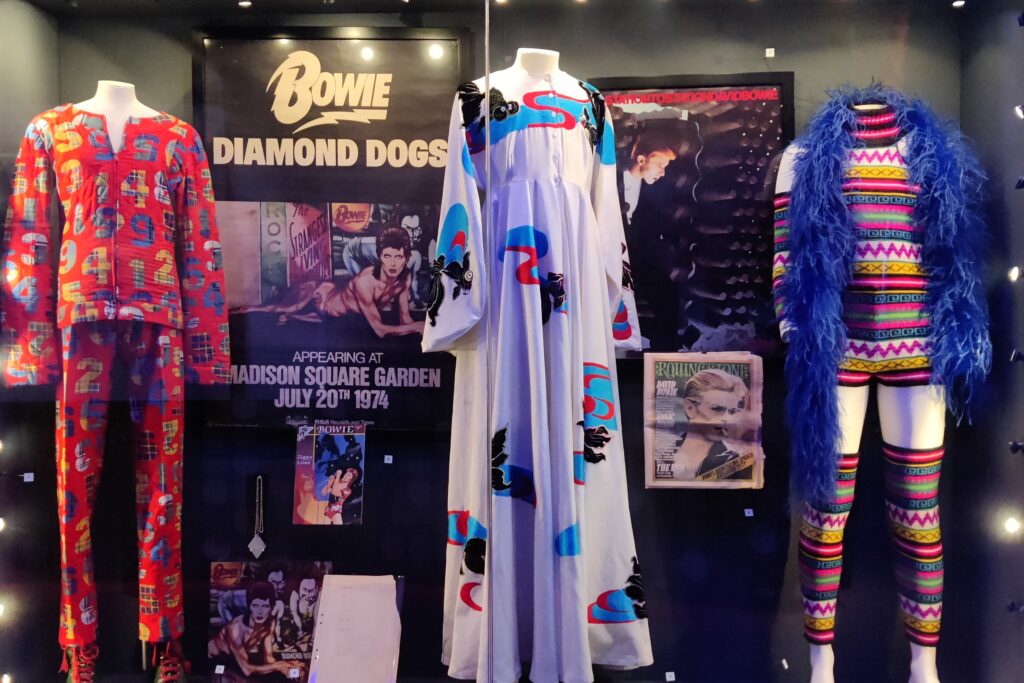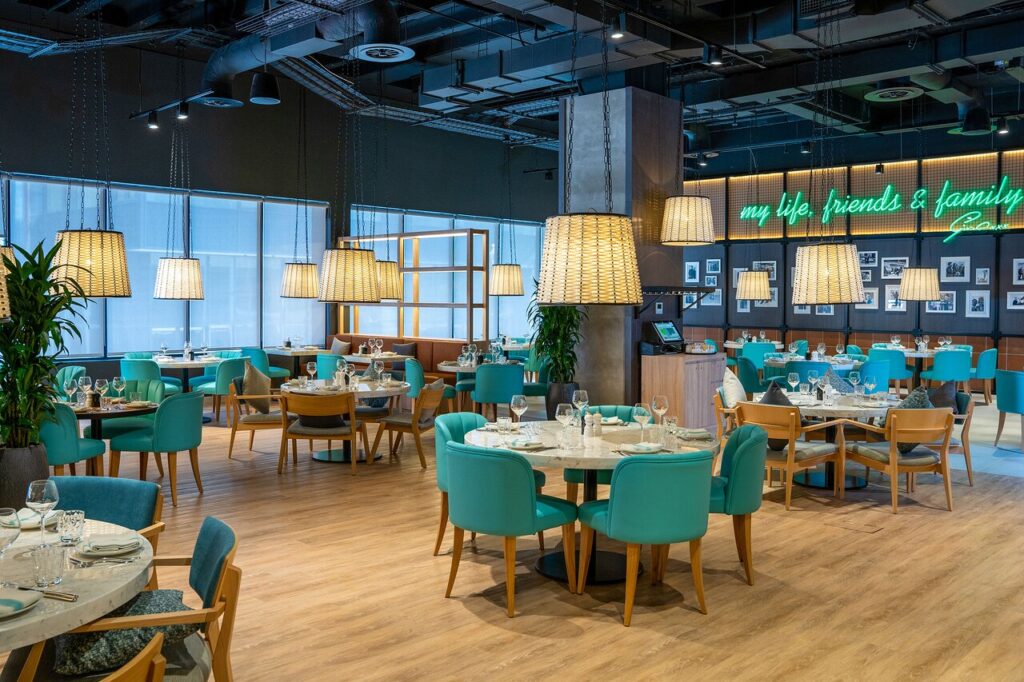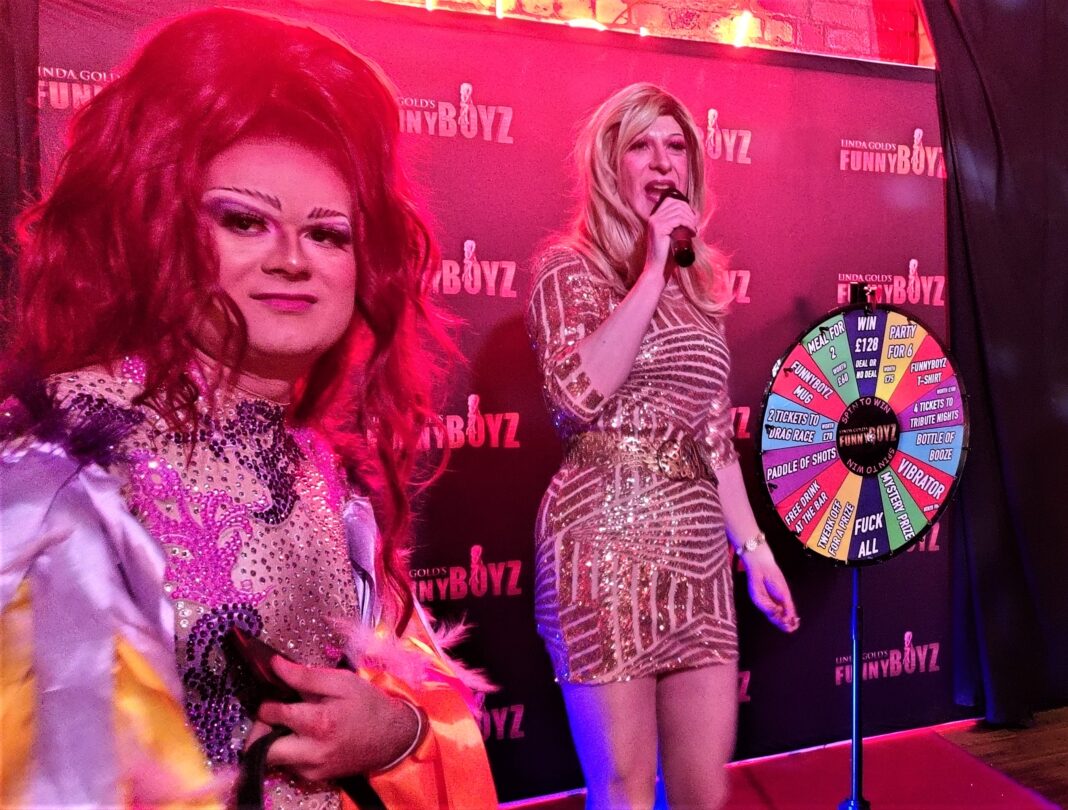There are two things Liverpudlians take very, very seriously One is football, and if that’s your thing, you should plan your visit around a home game, when the team’s LGBTQ+ Liverpool FC fan group Kop Outs do a fantastic job of rallying the queer troops.
The second is music, the poppier the better. It pervades the city’s culture from its museums to its bars and clubs. You’ll be on the dancefloor grooving down to a Spice Girls remix, look around and everybody will be singing along. It truly does bring people together.
Most of what you’re looking for will be a short walk from the downtown hotels: cultural institutions clustered on the Royal Albert Dock, LGBTQ+ nightlife on or near Stanley Street. Hipsters will want to head south to the Baltic Triangle, where galleries, boutiques and brewpubs are scattered among garages and workshops. Bold Street is home to restaurants both cool and affordable. And the mainstream shopping area is clustered around pedestrianized Church Street and Liverpool ONE, which is a kinda-sorta mall disguised as a high street—very clever.
Here are some places to get you started.
What to see and do
Mersey Ferry Cruise (Pier Head, George Parade). “Ferry Cross the Mersey,” released in 1964 by Gerry and the Pacemakers, then Frankie Goes to Hollywood in 1983, could be considered Liverpool’s theme song. An essential outing for any Liverpool visit is a ferry ride. Try the 50-minute sightseeing cruise that features an audio tour pointing out sites along the river. During Eurovision, the service will be hosting viewing parties.
Museum of Liverpool (Pier Head, Mann Island). In a country with so many museums of global interest, it may seem odd to prioritize a visit to a locally focused collection called Wondrous Place. But there’s such a gleeful hometown pride and inclusiveness here: a painting of Pete Burns, the flamboyant openly gay frontman of Dead or Alive, greets visitors in the main exhibition room, there’s a remarkable exhibit on an artsy LGBTQ+ club night called Sonic Yootha (see listing below) and rainbow flags waved by the Liverpool FC queer fan group—that this stop is an essential (and free) one for getting oriented to the world of Merseyside.

Tate Liverpool (Royal Albert Dock). A spinoff of the London franchise, this northern branch is just as well curated and thought-provoking as the southern outlets. An ever-changing roster of special exhibits. Free and easy to get to.
International Slavery Museum (Royal Albert Dock). As a key port for a major colonial power, Liverpool played a role in the transatlantic slave trade; by 1740, it had surpassed London and Bristol as Britain’s slave-trading capital, building the ships and sending goods to Africa that were traded for enslaved people who were taken to North America. The exhibits are detailed enough for researchers, but also moving and humane, foregrounding the stories of enslaved people themselves.
British Music Experience (Cunard Building, Canada Blvd.). Housed in a grand former passenger terminal for the famed shipping and cruise company Cunard, this up-to-the-minute collection of artifacts from the world of British music contains outfits from David Bowie, Elton John, Freddy Mercury, Dusty Springfield, Boy George, the Spice Girls and many others. Throughout the day, scheduled hologram “concerts” take place on a stage in the middle of the grand space.

The Beatles Story (Britannia Vaults, Royal Albert Dock). Even if the Fab Four is before your time, you have to admire all the trends they launched: boy-band fanaticism, the expectation that every album will be more revolutionary than the last and the use of recording-studio techniques to create astonishingly unnatural sounds on their records. Queer footnote: Long-time Beatles manager Brian Epstein was a closeted gay man who died just weeks after homosexuality was legalized in the U.K. in 1967; his death was considered a contributing factor to the break up of the band. In 2022, a statue of him was unveiled at the corner of Whitechapel and Stanley streets, the city’s first statue representing an LGBTQ+ person.
Strawberry Field (16 Beaconsfield Rd., Woolton). The children’s home playground that was the inspiration for The Beatles hit “Strawberry Fields Forever” is now a museum, park and café celebrating the property’s history, the song and songwriter John Lennon’s childhood inspirations. The attraction is run by the Salvation Army—I know, not a great track record as an institution—but supports a work-skills program for young people that’s LGBTQ+ inclusive; there have been openly trans participants since the program launched in 2019. They do lovely light lunches.
Liverpool FC (Anfield Rd., Anfield). If a home match happens during your visit, it’s worth checking out a soccer/football game. Liverpool FC was one of the first Premier League teams in the U.K. to host an LGBTQ+ event to combat homophobia in the sport and the FC’s LGBTQ+ fan club Kop Outs! is very active in supporting the team.
Where to stay
INNSiDE Liverpool (43 Old Hall St.). A particularly fun and easygoing brand of the gay-friendly Meliá chain, the stylish resto-lounge-lobby here will make you want to make new friends to invite over for cocktails. The location is just right: a short enough walk to LGBTQ+ nightlife, but far enough away that it’s quiet at night. The stylish rooms even include free beverages. Even if you don’t stay here, you must have a drink in the 18th-floor Sky Bar, which has a view of the famous Liver Building and the Albert Docks. Both the bar’s menu, and the lobby restaurant’s menu, were prepared by celebrity chef Gino D’Acampo.

Malmaison Liverpool (7 William Jessop Way). The bold decor of this mid-sized hotel is a little bit 1980s (in the best sense), a little bit Vivienne Westwood and a lot of fun. Central location and a cool bar.
Selina Liverpool (56-60 Mount Pleasant). Located in the hipster ’hood Baltic Triangle, this cool boutique hotel draws on local culture for its decor. Its proximity to galleries and coffee shops offers an alternative entry point to Liverpool culture—it’s only about a 15-minute walk to the Cavern Quarter, but it feels like another world.
Aloft Liverpool (1 N. John St.). Located in the historo-fabulous Royal Insurance Building, this Marriott-brand hotel is as central as it gets. The rooms have a clean, contemporary style and all the high-tech plug-and-play amenities you need to stay entertained and connected.
Where to eat
The Art School Restaurant (1 Sugnall St.). If Liverpool is not yet famous for its culinary scene, that’s not the fault of the award-winning owner and chef Paul Askew, who has been championing the cause of fine dining for years—and producing truly awesome tasting menus as he goes. Sticking as much as he can to local ingredients, Askew brings imagination and precision to his kitchen. Think of salt-aged miso Cumbrian duck leg with spiced plum puree, natural jus, winter leaves and pickled radish and you’ll get a sense of his magic. The crisp, clean dining room—located in what used to be the courtyard of an art school—is impeccably run. For something more casual, try Askew’s Barnacle restaurant at Duke Street Market food hall (46 Duke St.). The market’s other kitchens feature non-cliched dishes inspired by Asia, Latin America and other cuisines, demonstrating that the rest of the city might be catching up with Askew.
FunnyBoyz Drag Brunch (Supper Club at Blundell Street, 63 Blundell St.). Okay, you’re not coming here for the food (which isn’t bad, actually), you’re coming here for the bottomless Prosecco, the naughty song-and-dance number and the willingness of staff to move tables out of the way so you can sing along and dance to the music. It’s a true LGBTQ+ business success story—FunnyBoyz operates a network of drag brunches across the U.K., providing work for as many as 100 queens. The patrons are mostly partying women, who might wear matching outfits for their girls’ afternoon out.
The Smugglers Cove (Britannia Pavillion, Albert Dock). A cut above most of the cruise-ship-focused restaurants on Albert Dock, the artsy knickknack-based decor is the right mix of glamour and camp. The food is good, some of it locally inspired. The dining room staff had a notable number of visibly queer team members during our meal; we ran into some of them in the bars afterward, and they praised the company for its inclusiveness. Though they’re famous for their hanging kebabs, I’d recommend the scouse, a hearty Irish-style stew that lent its name to the people and the dialect of Merseyside.
Alberts Schloss (Radiant House, 18-26 Bold St.). In a city where the nightlife can skew young, this resto-club offers a more sophisticated sense of fun in a big room that’s a little bit Spiegeltent, a little bit beer hall. The entertainment programming leans heavily into artsy and queer. A good time, even before trying out the offerings of the schnapps kiosk.
Where to party
Liverpool’s rainbow-decorated Pride Village is located on and around Stanley Street, across Victoria Street from a straighter entertainment district. It’s very compact; you shouldn’t have to walk more than a couple of minutes to get from one venue to the next, and few places regularly charge cover, so there’s all the more reason to roam around for the best time. The scene tends to be young, with many of the bars playing music you’re meant to sing along to with your gaggle of friends. Hen parties can change the vibe.
Sonic Yootha (various locations). Artsy, edgy, goofy and diverse only start to describe this queer gender-blending monthly party. For some it’s as much a movement as a night out. The music’s all over the place, in the best possible way.
The Lisbon Bar (35 Victoria St.). It’s in a basement, but boy, do the chandeliers, ornate ceiling and the wooden décor elevate the experience at this dependably fun bar. It starts off mellow during the after-work drinks phase, then gets dance-y, then gets chill and flirty when people start leaving for the late-night clubs. A mix of ages and genders.
OMG (9 Victoria St.). Fresh, neon-lit contemporary decor and a fun-loving young crowd. Bar upstairs, nightclub downstairs, complete with stripper pole complete with the warning, “Customers use this pole at their own risk.” Expect drag at any moment.
The Navy Bar (22 Stanley St.). Lounge and dancing upstairs at this venerable haunt. Drag bar downstairs.
Masquerade (10 Cumberland St.). In a city where it’s easy to meet the locals, this bar-lounge-club might make it the easiest. It’s been around for more than 25 years, succeeding with high spirits and fun, campy music.
The Poste House (23 Cumberland St.). Dating back to 1820, this is one of the oldest pubs in Liverpool, period. Attracts a wide queer demographic, among them older gay men.
GBar Liverpool (1-7 Eberle St.). One of the two late-night gay spots—probably the gayer of the two—GBar opens after 11 p.m. Fridays and Saturdays with three rooms featuring multiple kinds of music. In a city so devoted to pop, this is a place to catch some house, R&B and other genres.
Heaven Liverpool (10-18 Victoria St.). Open till sunrise seven days a week, this legendary gay-friendly afterhours is fuelled by pop remixes, house music, drag performances and competitions and a lot of hot fun-loving people.
Editor’s note: The cost of the writer’s trip to Liverpool was covered by VisitBritain. The sponsors of the trip did not direct or review coverage. The views expressed are the writer’s own.


